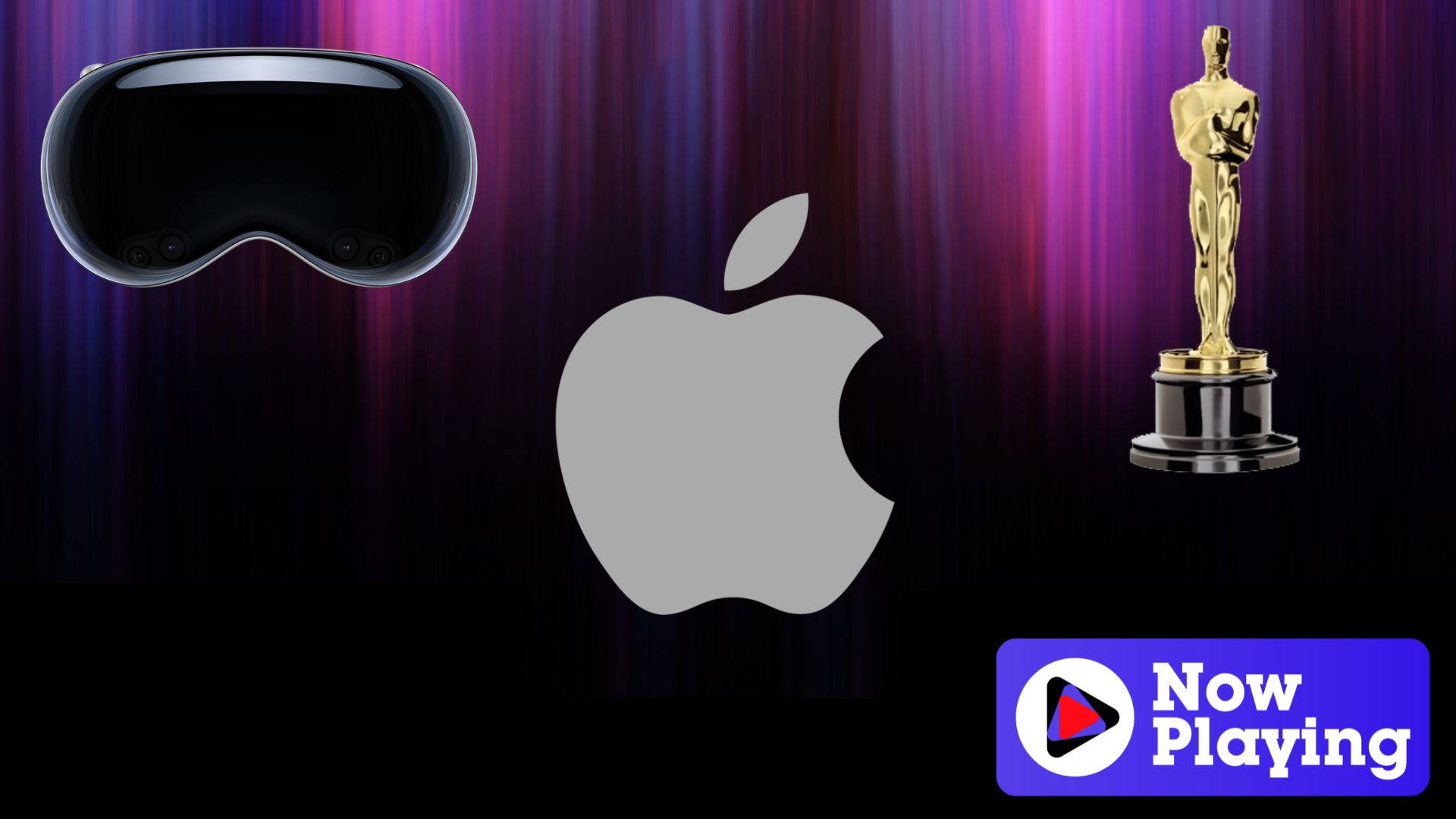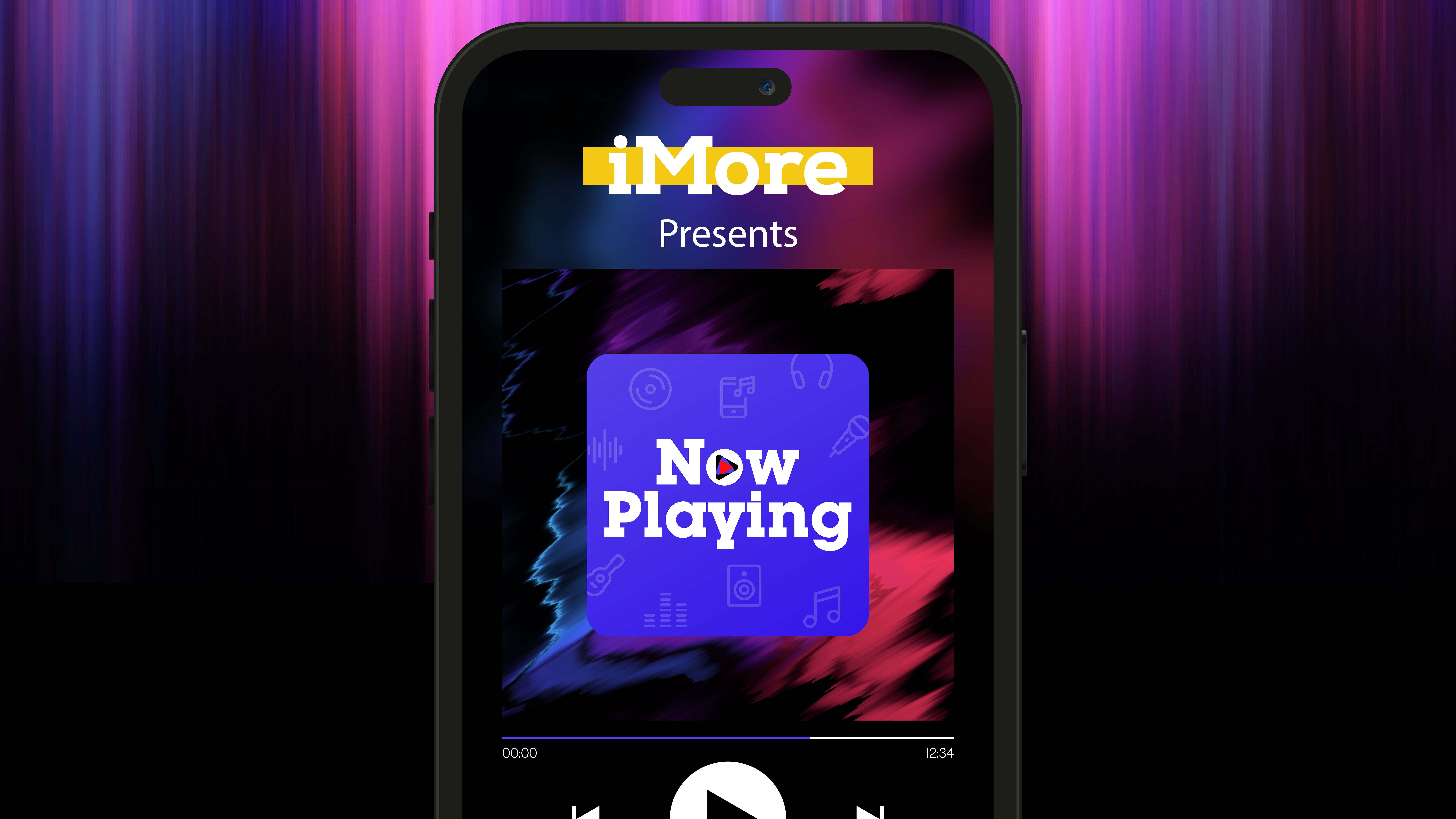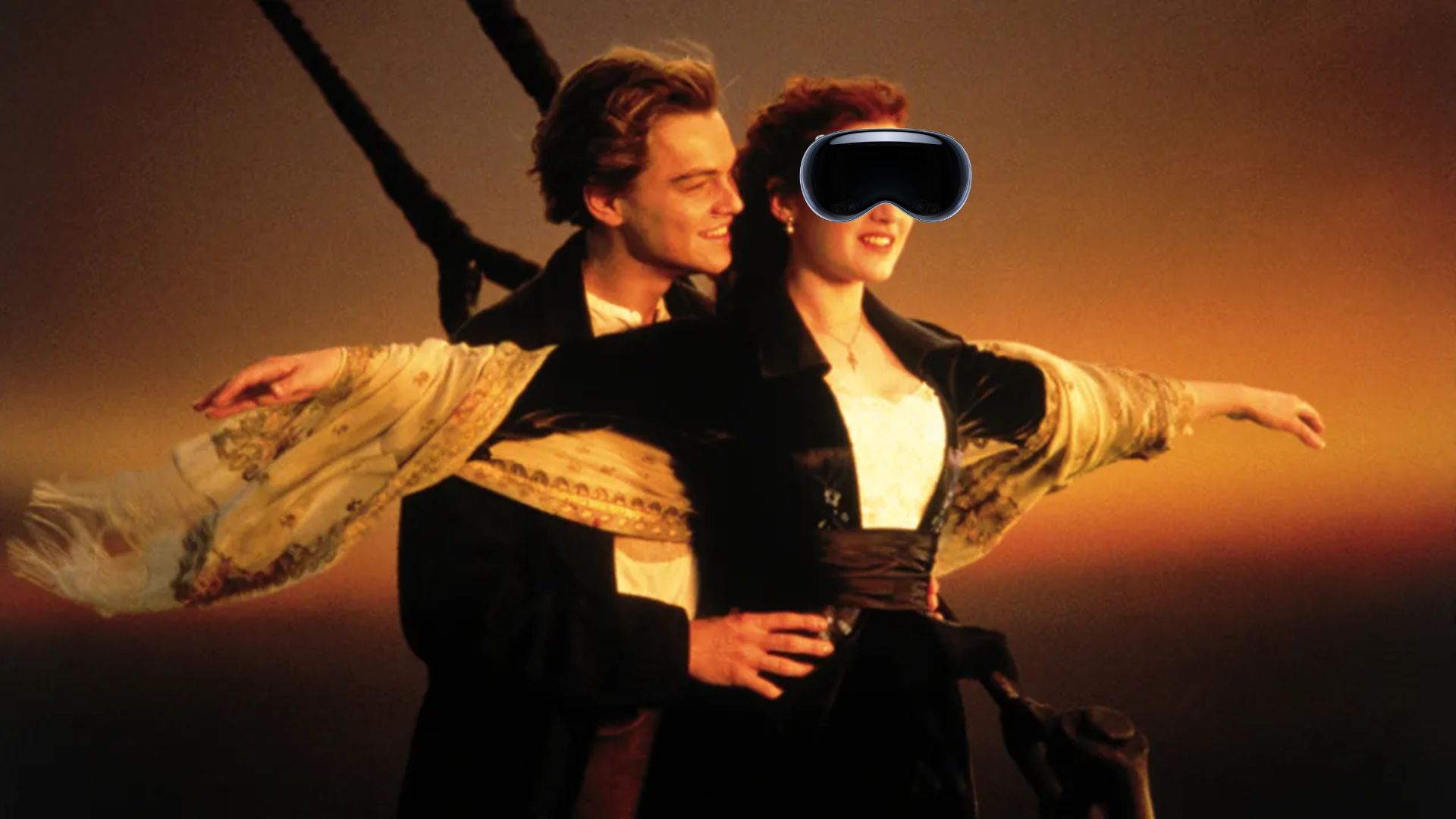Apple has lots of plans for spatial media as Vision Pro comes to shelves, but not all of it seems to be going to plan

Only a few days ago, Apple released its new mixed-reality headset, the Vision Pro. While all the other virtual reality or augmented reality headset manufacturers have stuck with the VR or AR moniker with which to describe their devices, Apple however has instead made its own name for what it presumably sees as the next era of computing — spatial computing. Computing in space! Or something…?

Now Playing is a weekly column from iMore's resident audiophile Tammy Rogers, looking into the state of the media streaming landscape. From headline-grabbing Apple Music exclusives to Oscar-baiting blockbuster Apple TV+ films, Apple is becoming a more recognized part of the media, arts and entertainment landscape. Now Playing will help you make sense of Apple's place in the industry.
Apple doesn’t want the Vision Pro to be a gaming headset like its competitors. Instead, Vision Pro is positioned to one day replace your PC, today acting as a working companion to your expensive and powerful MacBook Pro or Mac Studio, as well as being a very high-tech media player. As a computer replacement in a world where people use their primary computer as a method of consuming various types of content, Vision Pro needs to be good at watching movies, playing games, and more — and do it in such a way that stands out from the rest of the portable computing space.
Apple hopes that what sets Vision Pro apart is ‘spatial’ everything.
Spatial video, Spatial Audio, and spatial photography are all built into Apple's latest innovative device — although that does mean that Apple has tossed all its eggs in one basket. If no one is interested in all things spatial then Vision Pro, and by extension, Apple, have a problem
To make sure that spatial ‘things’ become the ‘next big thing, period’, Apple has put a significant amount of money into making sure that content exists for the headset. That means Spatial Audio tracks that don’t cost Apple Music users any extra subscription fees, and 3D movies in Apple TV+. To get the ball rolling, Apple has already gotten started on making the new ‘spatial’ version of ‘things’ more likely to happen. There’s Apple Original Pictures for one, with its aim to bring exclusive movies and TV shows to Apple devices, and then a boost to Spatial Audio royalties for artists that record and master their music in Spatial Audio. A good start, one might have thought.
Unfortunately, not everything seems to be going to plan.
Spatial Audio royalties go pop

If Apple wants Spatial Audio to really take off, the first thing it needs is loads of Spatial Audio tracks to be available on its streaming platform. While we don’t have the exact number of tracks that are available with Apple Music, we do have some interesting stats from Apple itself. According to the Cupertino giant, there are only 10% of users who are yet to listen to a Spatial Audio mixed track, and the amount of tracks mixed in Spatial Audio has increased 5,000% since the format joined Apple Music. Even more interestingly, Spatial Audio accounted for 4/5s of the music that landed in the platforms Global Daily Top 100 over the last 12 months — which is certainly impressive.
iMore offers spot-on advice and guidance from our team of experts, with decades of Apple device experience to lean on. Learn more with iMore!
It remains hard to find precisely just how many albums have the Spatial Audio surround sound mix attached, but it's by no means the entire Apple library. Finding anything mixed in the format is harder than it needs to be, and even new music being added to the platform won’t necessarily have the Dolby Atmos accreditation.

To make the Spatial library larger, Apple increased royalties for artists and labels adding Spatial Audio music to the platform. That would be an extra 10% for tracks added in the format — a not insignificant percentage that Apple hoped would encourage engagement with surround sound. Unfortunately, there’s a catch that many artists and labels aren’t too happy about.
That extra 10% isn’t really added on, instead coming from a fixed pot of available revenue for streaming, according to a Financial Times report. That means that money for normal streams of music that aren’t Spatial Audio accredited could go down, costing the label and the artist revenue in the process. For those who are confused by this seemingly-fixed payment structure, you are not alone — we reached out to some of the affected labels for clarification, but at the time of writing none were prepared to discuss the details of the deals they have in place with Apple.
To make the Spatial library larger, Apple increased royalties for artists and labels adding Spatial Audio music to the platform.
However confusing, the fact remains that it hasn’t encouraged artists and labels to pick up the format — after all, to record and master a Spatial Audio track you have to add on an extra $1,000 in production costs per piece. For some labels that could add up to tens of thousands of dollars per artist, making updating their library too costly — but also leaving them with lower revenue as non-spatial tracks are left in the cold. Some labels are now looking at fixing the problem with Apple, or taking their business elsewhere should discussions falter or fail. That, obviously, would be catastrophic.
It’s not a good start to the Spatial era, particularly as the Vision Pro headset has gone all-in on Spatial Audio. The apparently excellent but leaky speakers strapped to the side of the headset will pump out Spatial Audio from Apple Music, as will the USB-C version of the AirPods Pro 2 that can be paired with Vision Pro.
Want Spatial Audio in Vision Pro?

Then you’re stuck with those two above options — although it seems like that’s for good reason. Apple is only allowing ‘hi-res’ Spatial Audio with Vision Pro, something that the AirPods Pro 2 (with USB-C — sorry Lightning-model owners) are exclusively capable of. Same goes for those weird head-mounted speakers that will let everyone in the room/plane cabin/jacuzzi know that you’re listening to something embarrassing.
Want to try out Spatial Audio with a pair of otherwise-spatially-compatible AirPods 3 or AirPods Max? No luck there I’m afraid, time for a new pair, you pauper.
Some directors are all in on spatial movies, though

What won’t make Apple worried (or at least as worried) is that all the directors that see spatial movies in Vision Pro are apparently ‘blown away.’ James Cameron, the visionary director behind the likes of Titanic, Aliens, and most recently Avatar: The Way of Water seems to be pretty excited about Vision Pro and the movie experience that the headset can provide.
“I would say my experience was religious,” Cameron told Vanity Fair, giving us some idea as to the calibre of director that’s had a chance to play with Vision Pro. Jon Favreau, creator of Chef and The Mandalorian (and never the twain shall meet) said that he was “excited by what kind of story I can tell now that I couldn’t tell before now” — and he’s the guy that brought dinosaurs to Vision Pro through Dinosaur Encounters on the App Store and Prehistoric Planet on Apple TV+. He’s made sure that those of us with dreams of being eaten by a T-Rex are well fed (or at least as well fed as the T-Rex would be when he’s got me in his jaws. I’m very fatty, so I’m likely more delicious than filling, though.)
Apple at the Oscars

Apple has already had some success with its Original Films business, coming away with awards for movies like CODA at the Oscars. Even more recently, Apple has had loads of Oscar nominations for its latest movie projects, with Killers of the Flower Moon (a Martin Scorsese opus) and Napoleon (from one Ridley Scott, Gladiator man) both receiving nominations — including Best Picture for the former.
Both of those movies will be coming to Apple TV+, with enhanced immersion thanks to the extra pizazz that the headset adds in the form of a kind of virtual cinema. Will this make more people likely to buy an Apple Vision Pro? Only time will tell, and I’m not sure that spatial movies, video, or even hi-res Spatial Audio are going to be what really pushes potential customers over the ‘should I really spend as much as a secondhand car on a mixed reality headset?’ threshold.
Apple’s Spatial speculation
Apple is almost putting all its eggs in one basket with the Vision Pro. While it has thriving lines of laptops, phones, and tablets, it looks like the firm thinks that this is the future of computing. Personally, I can’t think of something much worse than wearing an aluminum and glass headset that weighs as much as an iPad on my face for anything longer than half an hour, but I am but one grumpy tech writer.
Apple certainly seems to be putting in the work to make sure that Vision Pro has plenty of content for some time to come — but is it really enough?
What to watch

Apple is going to the Oscars once again — and you should probably check out the two films that its awards hopes rest on. First and foremost is the movie up for best picture: Killers of the Flower Moon. The Martin Scorsese flick is an epic western drama that tells the story of the murders of the Osage Native American people in 1920s Oklahoma. It's based on a book by David Grann and real history — and it does an excellent job of not only sticking pretty rigidly to the actual story but also being a harrowing and realistic portrayal of the US's relationship with its indigenous population.
Lily Gladstone, who plays the main character Mollie Kyle, is up for Best Actress in a Leading Role, and Scorsese is up for Best Director. It's loaded to the top with incredible talent, including Robert De Niro, Leonardo DiCaprio, and Brendan Fraser. Make no mistake — it's a lot to take in and emotionally draining, but it's an excellent picture and one to watch.
Napoleon, Apple's other Oscar-nominated film, is one that's slightly more divisive. It tells the story of the legendary French Emperor and General, Napoleon Bonaparte, and director Ridley Scott managed to rustle some feathers with movie critics, the French, and historians in one two-and-a-half-hour streak.

There's no denying that Scott's film is an epic affair — the battles look incredible, with some truly enormous set pieces hammering home the scale of the fighting. There's a standout performance from Vanessa Kirby who plays Napoleon's long-suffering wife, Josephine, arresting your attention every time she's on-screen with a kind of mischievous joy and underlying cunning.
Joaquin Phoenix's Napoleon himself leaves a lot to be desired, however — beyond his weird, sniveling on-screen persona, it feels like Phoenix is only putting in three-quarters of the effort necessary. History fans aren't going to be massive fans of the inaccuracies either, especially as they watch a cannonball take a massive chunk out of the pyramids of Giza. For those after an epic historical romp that will make you laugh (whether it means to or not), however, will have a good time watching Napoleon mope about his manor houses and have various battles with other rulers of the time.
What to listen to

Looking for something to listen to in the run-up to the Super Bowl? Usher's going to be playing the Apple Music-sponsored halftime show, and Apple Music listeners can tune into his "My Road to Halftime" playlist to dust up on one of the biggest R&B artists in the world.
There are some of Usher's most well-known tracks in the playlist, including U Don't Have To Call, U Got it Bad, and My Boo. There's more here than just the greatest hits of Usher — there's a whole bunch of his biggest influences as well, like Alicia Keys' No One, and Frank Sinatra's Classic My Way. It follows Usher as he prepares for what is often one of the biggest music moments in the entertainment world, preparing himself for something that might become the most important show of his career.
The playlist is available now, just before Usher releases his ninth album, COMING HOME. If you want to learn more about the man behind the name then there's also going to be an editorial feature on Apple Music called 'The Story of Usher in 20 Songs', "giving an in-depth look at the 30-year career of a generational artist and performer" Apple tells us.

As iMore's Senior Staff writer, Tammy uses her background in audio and Masters in screenwriting to pen engaging product reviews and informative buying guides. The resident audiophile (or audio weirdo), she's got an eye for detail and a love of top-quality sound. Apple is her bread and butter, with attention on HomeKit and Apple iPhone and Mac hardware. You won't find her far away from a keyboard even outside of working at iMore – in her spare time, she spends her free time writing feature-length and TV screenplays. Also known to enjoy driving digital cars around virtual circuits, to varying degrees of success. Just don't ask her about AirPods Max - you probably won't like her answer.
